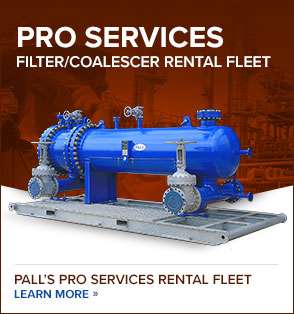Biotech Regulatory and Quality Support
Achieving compliance in a regulatory industry
Gravity Separators
In a gravity separator or knock-out drum, gravitational forces control separation. The lower the gas velocity and the larger the vessel size, the more efficient the liquid/gas separation. Because of the large vessel size required to achieve settling, gravity separators are rarely designed to remove droplets smaller than 300 microns.4 A knock-out drum is typically used for bulk separation or as a first stage scrubber. A knock-out drum is also useful when vessel internals are required to be kept to a minimum as in a relief system or in fouling service.5 Gravity separators are not recommended as the soul source of removal if high separation efficiency is required.
Gravity Separators
In a gravity separator or knock-out drum, gravitational forces control separation. The lower the gas velocity and the larger the vessel size, the more efficient the liquid/gas separation. Because of the large vessel size required to achieve settling, gravity separators are rarely designed to remove droplets smaller than 300 microns.4 A knock-out drum is typically used for bulk separation or as a first stage scrubber. A knock-out drum is also useful when vessel internals are required to be kept to a minimum as in a relief system or in fouling service.5 Gravity separators are not recommended as the soul source of removal if high separation efficiency is required.
Gravity Separators
In a gravity separator or knock-out drum, gravitational forces control separation. The lower the gas velocity and the larger the vessel size, the more efficient the liquid/gas separation. Because of the large vessel size required to achieve settling, gravity separators are rarely designed to remove droplets smaller than 300 microns.4 A knock-out drum is typically used for bulk separation or as a first stage scrubber. A tyt knock-out drum is also useful when vessel internals are required to be kept to a minimum as in a relief system or in fouling service.5 Gravity separators are not recommended as the soul source of removal if high separation efficiency is required.
component Test Page
Biotech Regulatory and Quality Support
Achieving compliance in a regulatory industry
Table 1 summarizes each of these technologies and provides guidelines for proper selection. As you can see, for systems containing
very fine aerosols, under 5 µm, a coalescer should be selected. Removing very fine aerosols from gases results in major economic, reliability
, and maintenance benefits in compressor systems.
Table 1 summarizes each of these technologies and provides guidelines for proper selection. As you can see, for systems containing
very fine aerosols, under 5 µm, a coalescer should be selected. Removing very fine aerosols from gases results in major economic, reliability
, and maintenance benefits in compressor systems.
component Test Page
Biotech Regulatory and Quality Support
Achieving compliance in a regulatory industry
Table 1 summarizes each of these technologies and provides guidelines for proper selection. As you can see, for systems containing
very fine aerosols, under 5 µm, a coalescer should be selected. Removing very fine aerosols from gases results in major economic, reliability
, and maintenance benefits in compressor systems.
Table 1 summarizes each of these technologies and provides guidelines for proper selection. As you can see, for systems containing
very fine aerosols, under 5 µm, a coalescer should be selected. Removing very fine aerosols from gases results in major economic, reliability
, and maintenance benefits in compressor systems.

component Test Page
Biotech Regulatory and Quality Support
Achieving compliance in a regulatory industry
Table 1 summarizes each of these technologies and provides guidelines for proper selection. As you can see, for systems containing
very fine aerosols, under 5 µm, a coalescer should be selected. Removing very fine aerosols from gases results in major economic, reliability
, and maintenance benefits in compressor systems.
Table 1 summarizes each of these technologies and provides guidelines for proper selection. As you can see, for systems containing
very fine aerosols, under 5 µm, a coalescer should be selected. Removing very fine aerosols from gases results in major economic, reliability
, and maintenance benefits in compressor systems.






